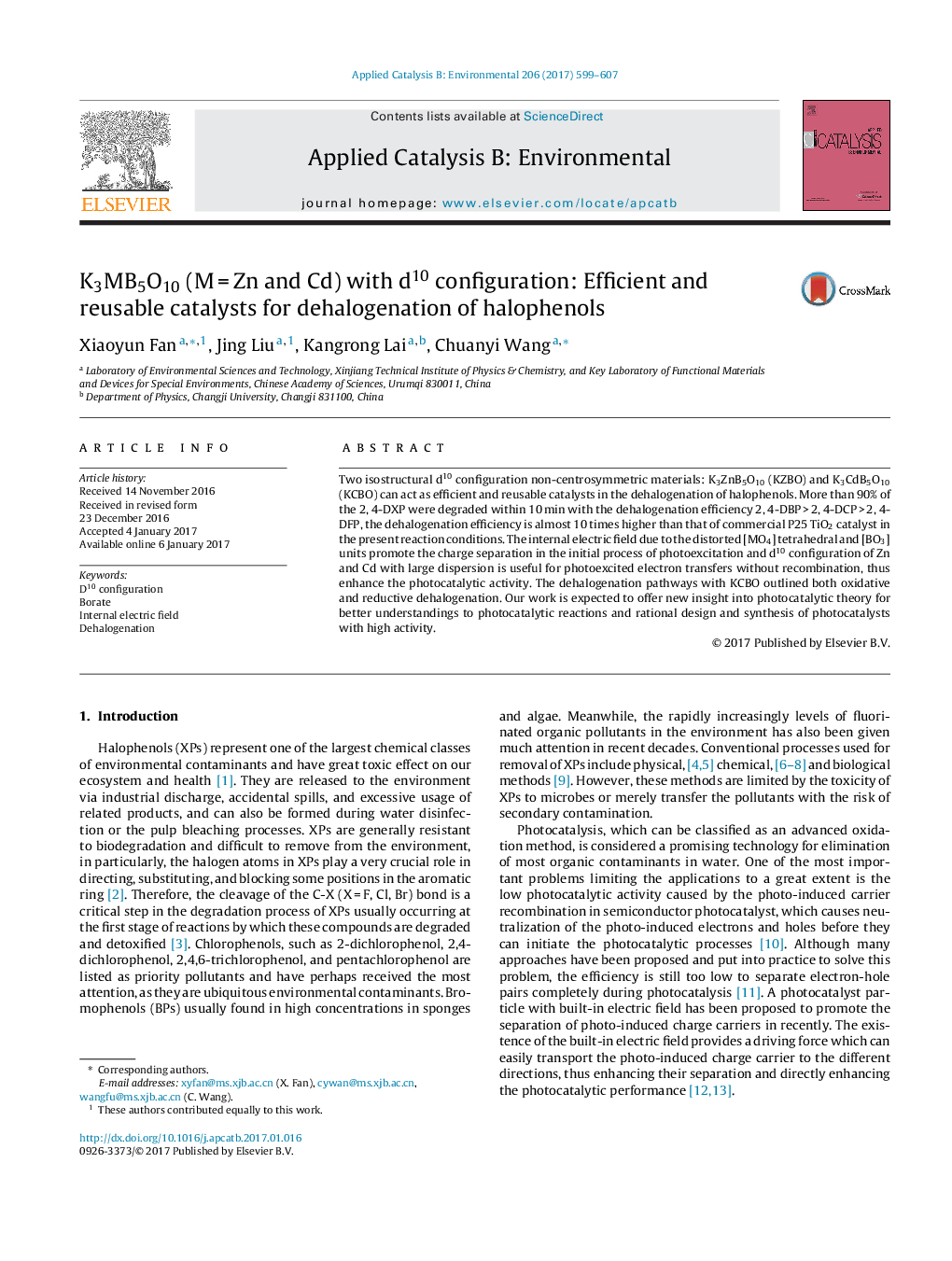| Article ID | Journal | Published Year | Pages | File Type |
|---|---|---|---|---|
| 6454759 | Applied Catalysis B: Environmental | 2017 | 9 Pages |
â¢Two isostructural d10 configuration non-centrosymmetric materials: K3ZnB5O10 (KZBO) and K3CdB5O10 (KCBO), were developed.â¢The catalysts show a high efficiency on the dehalogenation of HPs under UV-vis light irradiation.â¢The non-centrosymmetric structure facilitates the separation of photogenerated electrons and holes.â¢The dehalogenation pathways with KCBO outlined both oxidative and reductive dehalogenation.
Two isostructural d10 configuration non-centrosymmetric materials: K3ZnB5O10 (KZBO) and K3CdB5O10 (KCBO) can act as efficient and reusable catalysts in the dehalogenation of halophenols. More than 90% of the 2, 4-DXP were degraded within 10Â min with the dehalogenation efficiency 2, 4-DBPÂ >Â 2, 4-DCPÂ >Â 2, 4-DFP, the dehalogenation efficiency is almost 10 times higher than that of commercial P25 TiO2 catalyst in the present reaction conditions. The internal electric field due to the distorted [MO4] tetrahedral and [BO3] units promote the charge separation in the initial process of photoexcitation and d10 configuration of Zn and Cd with large dispersion is useful for photoexcited electron transfers without recombination, thus enhance the photocatalytic activity. The dehalogenation pathways with KCBO outlined both oxidative and reductive dehalogenation. Our work is expected to offer new insight into photocatalytic theory for better understandings to photocatalytic reactions and rational design and synthesis of photocatalysts with high activity.
Graphical abstractDownload high-res image (83KB)Download full-size image
